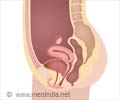The long term success rates achieved through surgery in treating pelvic organ prolapse are lower than previously thought.

"Each year, 225,000 women in the United States undergo surgery for pelvic organ prolapse, but little is known about long-term surgical outcomes," says Ingrid Nygaard, M.D., a urogynecologist and pelvic reconstructive surgeon at the University of Utah and first author on the study. "As our population ages, more and more women are going to be affected by pelvic organ prolapse, so it's critical to know whether these surgeries are effective."
Pelvic organ prolapse (POP) is a condition where the muscles and ligaments supporting a woman's pelvic organs stretch or weaken, causing these organs to slip out of place. Although POP can involve any pelvic organ, the most common organ affected is the bladder. POP is most often linked to childbirth, but can also develop after hysterectomy and tends to get worse with age. Common symptoms of POP include a feeling of pressure or fullness in the vagina and bladder- or bowel-related problems. There are no medications to treat POP, though many women gain relief by wearing a pessary, a silastic ring or cube that holds the bulge up, in the vagina. An estimated 7 percent to 19 percent of women undergo some type of surgical repair in their lifetime.
Abdominal sacrocolpopexy is considered to be the gold standard of surgical treatment for POP, and it involves placing a mesh via an abdominal approach to hold the vagina in its correct anatomical position. Nygaard and her colleagues in the Pelvic Floor Disorders Network (PFDN) studied women who underwent sacrocolpopexy for a period of seven years following surgery. Approximately half of these women also underwent another surgical procedure at the same time to prevent incontinence, which is a common complication after POP surgery. The researchers found that nearly one-third of women experience a recurrence of POP, either on examination or by reported symptoms, within five years of surgery.
"We were surprised to find that treatment failure rates after sacrocolpopexy were as high as they were," says Nygaard. "But, it's important to note that the failure rate depends on how failure is defined. In our study, few women had repeat surgery, even if they had symptoms related to POP."
Nygaard and her colleagues found that a majority of women who undergo sacrocolpopexy eventually experience urinary incontinence at some point. Women who underwent incontinence prevention surgery at the time of sacrocolpopexy were less likely to experience urinary incontinence and did not experience any additional complications related to that surgery. The researchers also found that mesh-related complications of sacrocolpopexy continue to occur over time. Approximately 10 percent percent of the women enrolled in the study experienced mesh erosion, and two-thirds of these women underwent surgical mesh removal.
Advertisement
A multidisciplinary team of researchers at the University of Utah, including physicians, biomechanical engineers, exercise scientists, biostatisticians, nurses, and physical therapists, is currently conducting research on preventing early POP. The PFDN is also performing a study to examine long-term outcomes for vaginal surgeries to treat POP. Nygaard and two of her University of Utah colleagues, Peggy Norton, M.D., professor of obstetrics and gynecology, and Yvonne Hsu, M.D., assistant professor of obstetrics and gynecology, are participating in this study, which includes 68 women from Utah. Nygaard anticipates that this new study, in combination with the current study, will provide valuable information on what surgery can and cannot accomplish in the treatment of POP.
Advertisement
Source-Eurekalert











